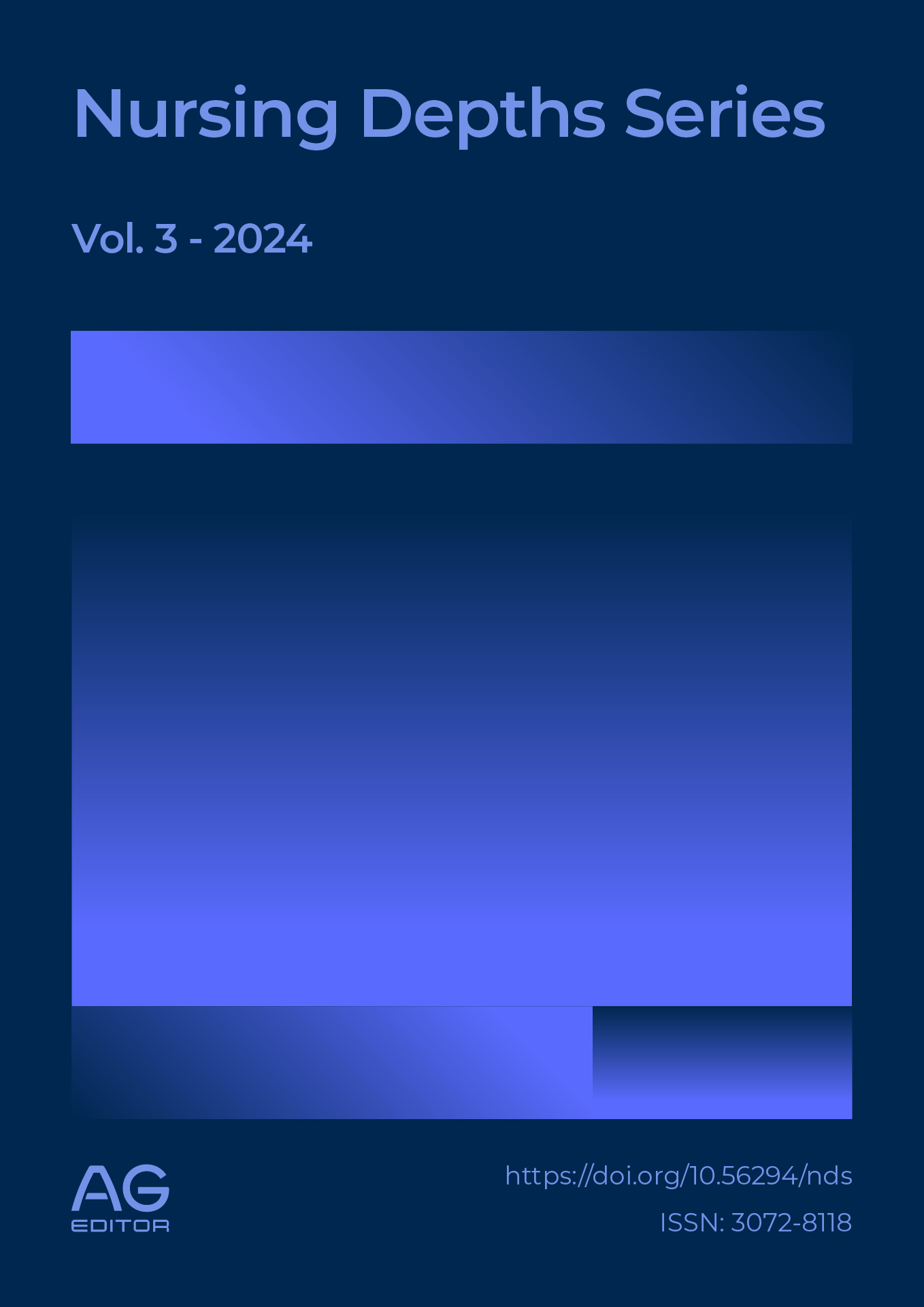Application of Dorothea Orem's Self-Care Deficit Theory in the comprehensive management of type 2 diabetes mellitus
DOI:
https://doi.org/10.56294/nds2024148Keywords:
self-care, nursing, type 2 diabetes mellitus, prevention, therapeutic adherenceAbstract
The study examined type 2 diabetes mellitus from the perspective of Dorothea Orem's Self-Care Deficit Theory and described how this approach guided nursing practice and research. It explained that self-care was a learned process that sustained life and well-being; when the subject did not meet their self-care demands, a deficit developed that required total or partial compensatory nursing systems and educational support. She reviewed the pathophysiology, noting that hyperglycaemia resulted from peripheral insulin resistance and progressive beta cell dysfunction, which predisposed individuals to chronic complications. He identified common signs and symptoms, classified the disease (type 1, type 2, and gestational), and specified modifiable and non-modifiable risk factors, highlighting the role of overweight, poor diet, and sedentary lifestyle. He described how diagnosis was based on tests such as HbA1c and FPG, and how treatment combined lifestyle modifications with stepwise pharmacological therapies, usually starting with metformin and, depending on the response, insulin analogues or incretin drugs and SGLT-2 inhibitors. He noted that prevention was based on health education, a low glycaemic index diet and regular physical activity. Finally, he developed nursing care focused on education, continuous monitoring, early detection of complications and addressing social determinants, concluding that the Orem model strengthened patient autonomy and optimised clinical and community outcomes.
References
1. Acevedo D. Medición y Control en la gestión y resultados. Disponible en: https://www.google.com.ec/books/edition/Medici%C3%B3n_y_Control_en_la_Gesti%C3%B3n_y_Res/EeNDEAAAQBAJ?hl=es&gbpv=1&dq=%22finalidad+b%C3%A1sica%22&pg=PA156&printsec=frontcover
2. Azeredo Chaves F, Torres H, Machado Chianca TC. Subconjunto terminológico para la Clasificación Internacional para la Práctica de Enfermería en Diabetes Mellitus. Rev Latino-Am Enfermagem. 2024. Disponible en: https://www.scielo.br/j/rlae/a/r3NC94tXvmVxw4ZYMkGHXtp/?lang=es# DOI: https://doi.org/10.1590/1518-8345.7018.4189
3. Bauzá Tamayo G. Incidencia y factores de riesgo de la diabetes gestacional. Acta Méd Cent. 2022;16(1). Disponible en: http://scielo.sld.cu/scielo.php?pid=S2709-79272022000100079&script=sci_arttext&tlng=en
4. Barceló A. La Diabetes en las Américas. Bol Epidemiol. 2001;22(2). Disponible en: https://www3.paho.org/spanish/sha/be_v22n2diabetes.htm#:~:text=El%20n%C3%BAmero%20de%20personas%20que,Am%C3%A9rica%20Latina%20y%20el%20Caribe
5. Chabla Inga MF, Mesa Cano IC, Ramírez Coronel AA, Jay Vásquez LC. Diabetes como factor de riesgo de mortalidad intrahospitalaria en pacientes con COVID-19: revisión sistemática. Arch Venez Farmacol Ter. 2021;40(3). Disponible en: http://saber.ucv.ve/ojs/index.php/rev_aavft/article/view/22963
6. Crizón Díaz DP, Morales Cardona CA. Manifestaciones dermatológicas de la diabetes: clasificación y diagnóstico. Iatreia. 2020;33(3). Disponible en: http://www.scielo.org.co/scielo.php?pid=S012107932020000300239&script=sci_arttext&tlng=es DOI: https://doi.org/10.17533/udea.iatreia.58
7. International Diabetes Federation. Los datos y cifras sobre la diabetes muestran la creciente carga mundial que supone para las personas, las familias y los países. Atlas de la Diabetes de la FID. 2021. Disponible en: https://idf.org/es/about-diabetes/diabetes-facts-figures/
8. Gagliardino JJ. Rev Soc Argent Diabetes. 2023. Disponible en: https://revistasad.com/index.php/diabetes/article/view/694/605
9. Garmendia Lorena F. Situación actual de la prevención de la diabetes mellitus tipo 2. Acta Méd Peru. 2022;39(1):51-8. Disponible en: http://www.scielo.org.pe/scielo.php?script=sci_arttext&pid=S172859172022000100051 DOI: https://doi.org/10.35663/amp.2022.391.2162
10. Henry Humberto Ariza MJ. Fisiopatología y mecanismos de acción del ejercicio en el manejo de la diabetes mellitus tipo 2. Rev Colomb Endocrinol. 2023;10(2). Disponible en: https://revistaendocrino.org/index.php/rcedm/article/view/790/1106 DOI: https://doi.org/10.53853/encr.10.2.790
11. Hoyos W, Hoyos K, Ruiz-PérezRander. Modelo de inteligencia artificial para la detección temprana de diabetes. Biomédica. 2023;43(supl 3). Disponible en: http://www.scielo.org.co/scielo.php?pid=S012041572023000600110&script=sci_arttext DOI: https://doi.org/10.7705/biomedica.7147
12. Medina Chávez JH, Vázquez Parrodi M, Mendoza Martínez P, Ríos Mejía ED, Anda Garay JC, Balandrán Duarte DA. Protocolo de Atención Integral: prevención, diagnóstico y tratamiento de diabetes mellitus 2. Rev Med Inst Mex Seguro Soc. 2022;60(Supl 1):S4-S18. Disponible en: https://www.ncbi.nlm.nih.gov/pmc/articles/PMC10395976
13. Organización Panamericana de la Salud. El número de personas con diabetes en las Américas se ha triplicado en tres décadas, según un informe de la OPS. OPS. 2022 nov 11. Disponible en: https://www.paho.org/es/noticias/11-11-2022-numero-personas-con-diabetes-americas-se-ha-triplicado-tres-decadas-segun
14. Román-González A. Diabetes mellitus y COVID-19: fisiopatología y propuesta de tratamiento para el control glucémico en el tiempo de la pandemia. Iatreia. 2021;34(2). Disponible en: http://www.scielo.org.co/scielo.php?pid=S0121-07932021000200161&script=sci_arttext DOI: https://doi.org/10.17533/udea.iatreia.93
15. World Health Organization. Enfoques prospectivos en el ámbito de la salud pública mundial. Guía práctica para el personal de la OMS. Ginebra: OMS; 2023. Disponible en: https://www.google.com.ec/books/edition/Enfoques_prospectivos_en_el_%C3%A1mbito_de_l/Y6IOEQAAQBAJ?hl=es&gbpv=0.
Published
Issue
Section
License
Copyright (c) 2024 Ruth Elizabeth Calderón Landívar , Patricia Verónica Aroca García, Sady Dayanara Villota Montenegro , Jenrry Fredy Chávez-Arizala (Author)

This work is licensed under a Creative Commons Attribution 4.0 International License.
The article is distributed under the Creative Commons Attribution 4.0 License. Unless otherwise stated, associated published material is distributed under the same licence.






